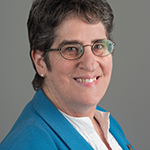 I vividly recollect asking my physics professor for a letter of recommendation. I sat in the front row of his lectures and visited his office hours most weeks in the semester. He turned me down because he was “too busy.” I was devastated—and panicked about asking my next choice for letter writer.
I vividly recollect asking my physics professor for a letter of recommendation. I sat in the front row of his lectures and visited his office hours most weeks in the semester. He turned me down because he was “too busy.” I was devastated—and panicked about asking my next choice for letter writer.
On the plus side, this memory crops up each time I am asked to write a letter. I vowed to be a person who helps move lives forward to the best of my ability. And I know that the “too busy” excuse is not helpful.
Getting to Yes
Now, some 40-plus years later, along with my research projects, I teach two classes at Harvard: one in the Medical School and the other in the School of Public Health. I start each semester by handing out an old-fashioned business card. I tell the students, “You will need someone at some point in your brilliant future to write a letter of recommendation. Keep this card and contact me. I will write such a letter for you.”
So far, about 40% of my past students have taken me up on the offer. (This next generation is so on top of things and knows when to grab an opportunity!) I also write letters for trainees who have worked in my department and early-stage investigators pursuing their first grants, as well as senior people who are deserving of recognition
awards and academic promotions.
I find a great joy in writing letters of recommendation or support. Yes, they take time to write. But the delight I find when I explore the incredibly cool things these people have done, especially trainees, and their great promise of even grander outcomes is inspiring. And then there is the joy of seeing a student or trainee take off in their chosen pathway.
I also love writing letters of support for awards to people for the brilliance they have brought to the world, especially so in rheumatology, where so many great discoveries have occurred while I have listened and watched in awe. I am honored to give voice to the recognition of these individuals’ contributions to science and, ultimately, better patient care.
Would I or Should I?
My first step in writing a letter of recommendation or support is whether I can do justice to the candidate. Sometimes I can’t. It may be that I don’t have any background or experience with the person.
Earlier in my career, I did not have the seniority to have the appropriate voice for the support. On rare occasions, a person did not provide their best self to our interactions. (Note: These individuals, even semi-consciously, know the fit isn’t good and typically don’t ask for a letter, so I don’t come across this scenario typically.) When I can’t provide a letter, I tell the candidate why and, if helpful, provide an alternative thought for a better fit to their needs.
For most letters, I ask the candidate for their curriculum vitae (CV)—yes, do keep your CV as up to date as possible. It’s helpful to be able to whip it out at a moment’s notice when asked for it. I ask what key points are most important to highlight in the letter and (most importantly) what accomplishment makes them most proud. That proudest accomplishment often tells me so much about what drives a person on their road to success.
If the letter is for fellowship or school, I ask to see the candidate’s personal statement. That helps round out our common goals of describing their best qualities on paper. Also, as a supporter, I have the opportunity to be far more expansive in my comments than a candidate could be.
A CV is our accepted professional record of career growth and achievements, but it is sometimes more beneficial if the person who requested the letter writes the first draft. Ghostwriting a letter of recommendation may seem weird at first glance, especially to trainees, but the requestor often does the best job of conveying the important facts and outlook that will be important to the readers. I find this especially true for early-career scientists because their CVs are short, but their ideas and forward momentum stand out in their own draft letters. This process is essential when writing a letter of support for job applications and grants.
3-D Movies (& Letters) Are the Best
A written piece of paper can’t fully describe the incredibly cool life and times of a fully three- or four-dimensional (with time in the mix) person. I start a letter with two points: First, I provide my credentials as a person who is able to give support (e.g., my seniority, research career, academic standing).
Then, I give a full description of how I met the candidate and my familiarity with their specific salient points. I try to be specific, personal and descriptive. It’s good to let the reader know your level of familiarity and relationship to the person described in your letter. A letter by a former professor may carry more weight than a letter by a former roommate. For academic letters of reference, (e.g., for appointments, promotions and tenure at a university), the committee requesting the letter often requests a clear statement about your relationship with the applicant (or lack thereof). Some require no personal connection for an independent review of a candidate, while others don’t require the arm’s length professional relationship. Conversely, a letter in support of a job application, an award or grant project usually is better from someone with close experience with the candidate.
The in-between parts of my letters mostly list academic credentials and the usual suspects or markers for future success (e.g., abstracts, papers, grants, teaching, mentorship, awards and honors, service to community), mixed in with how this person compares with others in our field. If the letter is for a promotion, I lean heavily on academic metrics. If the letter is for an award of distinction, say for the ACR/ARP, I include more anecdotes of the candidate’s personal steps toward the distinctive outcomes.
I typically end my letters with reflections on the person’s potential for the next step in their career. For some, it leans toward the Nobel Prize. For others, it’s securing a fellowship slot at the best institution. I also give my own personal Likert scale of recommendation (i.e., stellar/outstanding, high/great, worthy, or just plain ol’ good).
I do like to put the best foot forward in a letter, so those few letters with a plain ol’ good as my recommendation usually are accompanied by comments on the person’s promise for the future and how many very-good-but-not-currently-stellar people go on to have extraordinary futures.
One non-human example is the 1950’s canine movie star, Rin-Tin-Tin, a rescue dog in rough circumstances who went on to have his own star on the Hollywood Walk of Fame (or for more current social media dog reference, check out Tuna on Instagram; he also started out not stellar, but now has 2 million followers and his own book). Although my letters are not often written for dogs, they serve as an easy example of how not to judge a book/dog/letter candidate solely by today’s cover. It’s rare that a career path is linear. In fact, I hope for exponential and stellar growth in most careers.
After I write a letter, I wait a day or two. I reread the letter and edit for clarity. I think of better and more personal examples of how great the person truly is in real life that will matter to the readers of my letter of recommendation. The audience, or readers of my recommendation letter, is a key consideration for my examples.
For letters written for ACR/ARP awards, a strong flavor of rheumatology ices the cake. In our professional society we know what the key facts and features are for the rheumatology readership:
- ACR Convergence—✔
- Workshops/abstracts at ACR Convergence—✔
- Committees and work for the ACR/ARP—✔
- Friendships and collaborations—✔
- Advancing science and patient care—✔
- Supporting the next generation of ACR/ARP members—✔✔
The letters I have written are my stand-in for the real person in determining an individual’s future. It feels grand to be part of someone’s journey toward greatness (or even greater-ness). It is incredible to see the blossoming of a career or the well-deserved award of distinction as an outcome of writing a letter that describes the depth and truth of a lived experience with another human being on their journey.
I have served on Harvard Medical School’s Committee on Promotions, Reappointments & Appointments and read many, many letters of support. Specifics are key to advocating in a written document. I believe the best letters are full of examples, have some metrics and describe not only the person’s accomplishments to date, but give insights into the promise of what is yet to come. Often, a story is only as good as the storyteller.
My 2nd Request
I remember how wonderful my second invitation was back in 1975 when I asked another professor to write a letter of recommendation for me. She was kind and thoughtful and, most importantly to me, said “yes.” She asked me the right questions to help her write the letter. She inquired about the time frame, and she delivered on her promise to support and advocate for me.
I have asked countless people to support my career since that time, and I thank them from the bottom of my heart. They have helped me on my journey and told my story better than I ever could.
I have also written many, many letters of recommendation, and I will continue to do so, especially for the ACR/ARP. These letters bring light and the joy of discovery for each person, and renew my faith in humanity and the trek toward goodness and improvement that are key in medicine.
Thoughtful letter writing has the high promise of bringing bliss and hope to all engaged in the letter-writing activity—the author of the letter, the subject of the letter and the readers of the letter. I think the question for any of us with a view to the future is, “Why would I ever not write a letter of recommendation or support?”
 Marian T. Hannan, DSc, MPH, is a professor of medicine at Harvard Medical School and senior scientist at the Marcus Institute for Aging Research, Hebrew SeniorLife, Boston. She conducts epidemiological musculoskeletal studies with a research focus on foot disorders and biomechanics, as well as arthritis, osteoporosis and hip fracture.
Marian T. Hannan, DSc, MPH, is a professor of medicine at Harvard Medical School and senior scientist at the Marcus Institute for Aging Research, Hebrew SeniorLife, Boston. She conducts epidemiological musculoskeletal studies with a research focus on foot disorders and biomechanics, as well as arthritis, osteoporosis and hip fracture.
Acknowledgements: Dr. Hannan thanks the following for their insights and suggestions to make this piece more readable and digestible: Drs. Philip Seo, Nora Singer and Kori Dewing, Dr. Dewing’s very smart teenage daughter, Alana Dewing, and Keri Losavio.
